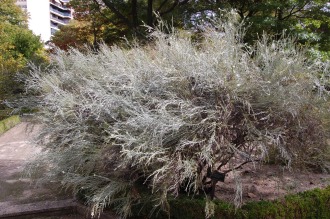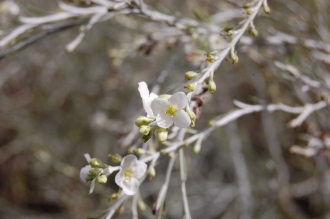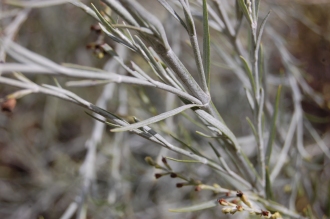Position: Full sun
Flowering period: Summer
Soil: Moist, well drained
Eventual Height: 2m
Eventual Spread: 2m
Hardiness: 7a, 7b, 8a, 8b, 9a, 9b, 10a, 10b, 11
Family: Scrophulariaceae
Gomphostigma virgatum is an evergreen shrub with a vase shaped, bushy habit . Its silver/ green leaves are lanceolate with entire margins, up t0 4cm long and 5mm broad. Its fragrant white flowers are star shaped and up to 2cm across.
Gomphostigma virgatum, commonly known as River Star, Otterbush or Besembossie, is native to South Africa and Zimbabwe. In its native habitat it grows at the edge of streams and wet places.
The etymological root of the binomial name Gomphostigma is derived from the Greek gompho meaning ‘a club’ and stigma, a flower part. Virgatum is from the Latin meaning ‘made of twigs’.
The landscape architect may find Gomphostigma virgatum useful as a marginal flowering shrub, with faintly fragrant flowers.
Ecologically, Gomphostigma virgatum flowers are attractive to pollinating insects.
Gomphostigma virgatum prefers wet, fertile, well-drained soils. It tolerates most pH of soil. It will tolerate a water depth of up to 6cm.
Gomphostigma virgatum requires little maintenance. It may be cut back in early spring to encourage a bushy habit.











